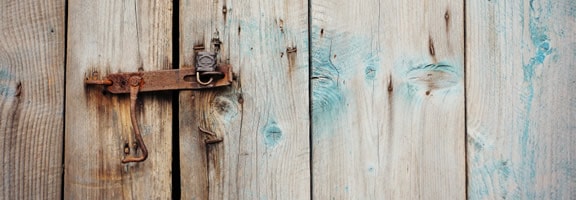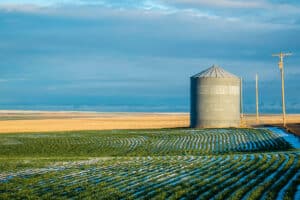“Hi, I’m William Devane – and I see the world in financial crisis with trillions in deficits, political upheaval, and unstable governments trying to print their way out of money troubles. I’ve become very concerned – and that’s why I buy gold every chance I get!”
We’ve all seen the ads on TV as Mr. Devane goes on to tout the benefits of buying gold from his sponsoring company. He speaks about avoiding chaos, gaining stability, even putting your gold in an IRA. Finally, “with your minimum order” he offers a free safe to store your gold – although the small safe looks like it could easily be tucked under your arm and carried away. He ends by saying “What’s in your safe?”
So, what’s in your “safe”? No, that’s not the secure box bolted inside your bedroom wall I’m speaking of. The word “safe” has a much broader meaning, considering the present state of world financial affairs. Perhaps it would be better to ask “Where is your money safe”?
Consider just a few of the present financial concerns: fiscal cliff, currency failure, inflation, government credit downgrades, nationalization of the energy, banking, or Internet systems, national deficits, double-dip recession or unemployment. Shall I go on?
Although many in our country have greatly depleted their cash reserves over the past 5 years, there are just as many who, through efficient planning and business success, have managed to hold onto their liquidity. The question in today’s world, then, is not how large a safe to install in your home, but how to guarantee the safety of your cash reserves (just in case).
To examine this issue carefully, you might first start with some of the fallacies being offered on TV as solutions. For example, the William Devane commercial. He says you can even put gold in your IRA. But notice that in other similar ads, you hear “We’ll ship your gold in 10 days or less”, or if you prefer, “we’ll store it for you”. Ask yourself: “Really – and where will I find you on the day of our country’s financial collapse?”
Think that IRA premise though a little further. “We’ll store it for you”, they say. And what do you get as proof that it’s stored? A piece of paper they call a “gold certificate?” And that piece of paper will be worth what on that fateful day?
Most of us in the U.S. have grown up with the full confidence that our $1 bill is worth $1 – guaranteed by our government. We also assume that when a total stranger writes on a piece of paper (called a check), that there is cash money to back it up. We have total confidence that the stranger is honest enough to make the check good. The same goes for handing our “plastic” to the clerk at WalMart. The store assumes that you, a total stranger, will pay for the merchandise later.
This incredible system of trust, honesty, and confidence has had a good run over the years. But, consider that it is all based on confidence and assumed honesty – a system that could fail at any time if that confidence were to evaporate.
So… back to the subject of – Where is your money “safe”?
Here’s a list of possibilities: gold bars, gold coins, silver bars, silver coins, antiques, municipal bonds, Dow 30 stocks, bank CD’s, mutual funds, U.S. currency, foreign currencies, IRA’s, livestock, ammunition (bullets), real estate – and finally, raw land.
The first four – gold and silver – are definitely tangible assets (provided you keep them in your physical possession). Not only is their value likely to rise in crisis times, but they can always be used as acceptable currency to purchase necessaries, such as food, clothing, etc.
But wait, let’s say you have a desperate need for food for your family. You have several of the 32.15 troy ounce gold “kilobars”. Each is worth $55,395.44 at recent prices. Since you only need about $50 in groceries for now, it is highly doubtful that your neighborhood grocer will be willing to give you the necessary change. Perhaps you have some of the 10-ounce gold bullion bars. Nope – even they are worth $17,230 each. So, let’s say you anticipated this challenge early on – and bought only “gold American Eagles” – those 1 ounce gold coins. Whoa – after buying your groceries, you’d also want change for that single coin – worth $1,723.
What about silver? Silver bullion and bars, although valued at a mere $36+ per ounce at this time can present the same challenge just mentioned. If you choose silver as a safe bet, consider buying either $1 Silver American Eagles (U.S. minted silver dollars) worth about $36.80 each (easily exchanged for food), or what is called a “dime bag” consisting of 10,000 pre-1965 dimes or a “Quarter bag” with 4,000 pre-1965 quarters – both of which, when minted, contained 90% pure silver. The “dime bag” weighs about 800 troy ounces and contains 715 ounces of pure silver. At recent prices, that “dime bag” will cost you $27,920.
Here’s the benefit to owning pre-1965 dimes and quarters. A single dime (a mere 10ç) may buy you close to a gallon of gasoline, since each dime is worth about $2.79 because of the silver content.
In summary, consider that previous metals, especially silver in small denominations, can be exchanged easily for necessities in times of crisis. Bullion and bars cannot, and further, the federal government requires the reporting and recordation of every transfer of bullion and bars. Coins, on the other hand, may be freely exchanged.
So… given that you may want to put away some silver coins in order to have an acceptable currency in times of total collapse, now consider all the paper solutions to protecting your liquid assets. They would be: municipal bonds, Dow 30 stocks, bank CD’s, mutual funds, U.S. currency, foreign currencies, IRA’s – and they are all backed by a piece of paper (and your confidence). Thinking back to my mention of “confidence” in the system, you must realize that any of these items could lose most or all of their value – while you sleep at night. That’s not going to provide you with much safety in a time of chaos and crisis.
At best, in addition to the silver coin suggestion, you may want to retain some U.S. currency in your safe – $5’s, $10’s, and $20’s. This can provide you with some immediate relief up to and until paper currency ceases to be accepted.
Some fringe assets, such as livestock and antiques are not likely to provide you with much safety, other than a good meal at dinner. Ammunition – bullets – are probably best left to the “Doomsday Preppers”, although self-defense should at least be considered.
Now… that leaves real estate – and land. It has often been said that “real estate is always marketable – but not liquid”. In other words, there are always buyers for real estate, but you are not likely to exchange real estate on short notice without a major price concession. Yes, it gives you a place to live – but doesn’t buy groceries.
Finally – “Under all is the land” – as the National Association of REALTORS® used to point out. Raw land may be, without question, the one asset type that will not disappear overnight. It can be held, rented to others, used to raise food, improved to provide a pure water source, occupied as shelter, hunted for family food, and timbered to build shelter and provide heat from a warm fire. It can be located in a remote area for defense and privacy.
Despite your like or dislike for the outcome of the recent presidential election, it appears that the one elected may qualify for “Land Salesmen of the Year!”. In recent weeks, since the election, there has been a strong “uptick” in requests for remote, private parcels of raw land. Whatever the reason, buying land at today’s low prices makes sense as the “safe” in which to invest excess liquidity.
Buy land for yourself, your family, and your safety. If you sell land, you either have already seen this surge towards land, or will very soon. Happy hunting!
What’s in your safe?
This content may not be used or reproduced in any manner whatsoever, in part or in whole, without written permission of LANDTHINK. Use of this content without permission is a violation of federal copyright law. The articles, posts, comments, opinions and information provided by LANDTHINK are for informational and research purposes only and DOES NOT substitute or coincide with the advice of an attorney, accountant, real estate broker or any other licensed real estate professional. LANDTHINK strongly advises visitors and readers to seek their own professional guidance and advice related to buying, investing in or selling real estate.










I really like your article, well written. The problem I see is when the price of land was soaring the tax assessor was quick to go up on the assessed value. Now that the value has bottom out It is extremely hard to get the assessed value lowered so you can afford to pay taxes on the fair market value and keep your land.
Idk if its best to invest in silver bullion at this time, seeing as it really hasn’t exploded like some experts said it would.